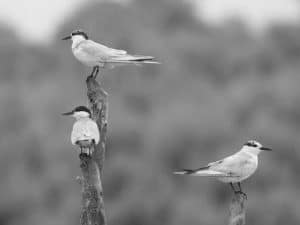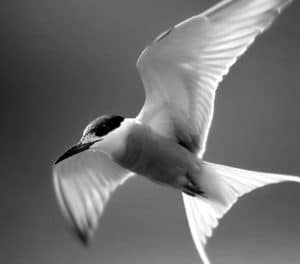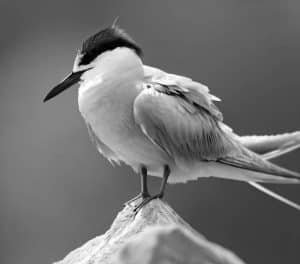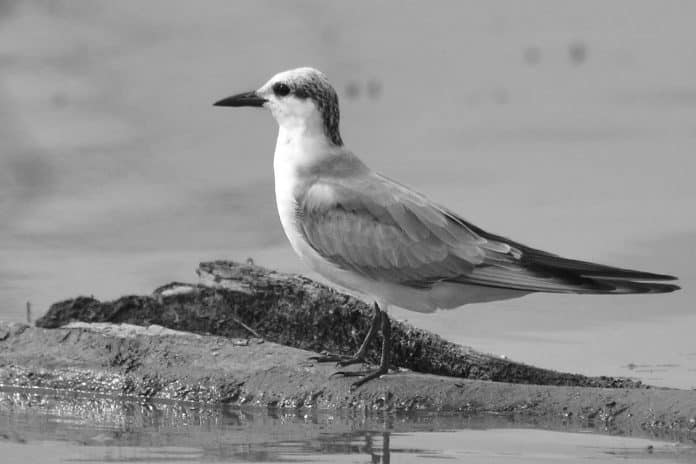Introduction to the Whiskered Tern
Tanzania is a country blessed with diverse wildlife and stunning natural landscapes. One of the fascinating bird species that can be found in Tanzania’s wetlands is the Whiskered Tern. With its distinctive appearance and unique behavior, the Whiskered Tern in Tanzania is a birdwatcher’s delight. In this article, we will explore the habitat, behavior, and conservation efforts for the Whiskered Tern in Tanzania, as well as provide tips for spotting and photographing this beautiful bird.
Habitat and Distribution of the Whiskered Tern

The Whiskered Tern is a migratory bird that can be found in various wetland habitats across the world. In Tanzania, it is commonly spotted in the country’s numerous wetlands, including Lake Victoria, Lake Tanganyika, and the Rufiji River Basin. These wetlands provide the perfect environment for the Whiskered Tern, with their abundance of shallow waters and rich food sources. The bird’s distribution in Tanzania is influenced by factors such as water availability, temperature, and the presence of suitable nesting sites.
Importance of Tanzania’s Wetlands for the Whiskered Tern
Tanzania’s wetlands play a crucial role in the survival of the Whiskered Tern. These wetlands provide not only a habitat for the bird but also serve as breeding grounds during the breeding season. The Whiskered Tern feeds on small fish, insects, and crustaceans, which are abundant in the wetlands. The availability of food sources in Tanzania’s wetlands ensures that the Whiskered Tern can thrive and successfully reproduce.
The presence of the Whiskered Tern in Tanzania’s wetlands also indicates the overall health of these ecosystems. As an indicator species, the bird’s presence or absence can provide valuable information about the ecological balance of the wetlands. Protecting and conserving the wetlands is not only beneficial for the Whiskered Tern but also for other bird species and the overall biodiversity of the area.
Behavior and Characteristics of the Whiskered Tern
The Whiskered Tern is a medium-sized bird with a distinct black and white plumage. Its most notable feature is the long white whisker-like feathers that extend from the sides of its face, giving it its name. These feathers are more prominent during the breeding season, when they serve as visual cues for mating and territorial displays.
The bird’s behavior is equally fascinating. The Whiskered Tern is a highly social species, often seen in large flocks during migration and breeding. It is an agile flyer, capable of hovering over the water surface while hunting for food. The Whiskered Tern is also known for its unique feeding technique, where it dips its beak into the water to catch small prey items. It is an adaptable bird, able to adjust its feeding habits based on the availability of food sources in its environment.
Best Time and Places to Spot the Whiskered Tern in Tanzania
If you’re eager to catch a glimpse of the Whiskered Tern in Tanzania, there are certain times and places that offer better chances of spotting this elusive bird. The best time to see the Whiskered Tern in Tanzania is during the wet season, from November to April. During this time, the wetlands are teeming with life, and the Whiskered Tern is more active in its breeding and feeding activities.
Lake Victoria, the largest lake in Africa, is one of the prime locations for spotting the Whiskered Tern. The lake’s vast expanse and surrounding wetlands provide an ideal habitat for the bird. Other notable locations include Lake Tanganyika and the Rufiji River Basin, where the Whiskered Tern can be observed nesting and foraging.
When visiting these wetlands, it is important to respect the birds’ natural habitat and observe from a distance. Binoculars or a spotting scope can enhance your birdwatching experience without causing disturbance to the Whiskered Tern or other bird species.
Conservation Efforts for the Whiskered Tern in Tanzania

Recognizing the importance of the Whiskered Tern and the wetland ecosystems it depends on, Tanzania has implemented various conservation measures to protect this bird species. The government has established protected areas, such as national parks and wildlife reserves, to safeguard the wetlands and their biodiversity. These protected areas serve as sanctuaries for the Whiskered Tern and other threatened bird species.
Additionally, local and international conservation organizations are actively involved in research and monitoring activities to gather valuable data on the Whiskered Tern’s population and habitat requirements. These efforts contribute to the development of effective conservation strategies and raise awareness about the importance of preserving Tanzania’s wetlands.
Other Bird Species Found in Tanzania’s Wetlands
Tanzania’s wetlands are home to a wide variety of bird species, making it a paradise for birdwatchers. Alongside the Whiskered Tern, you may encounter other interesting bird species during your visit. The African Fish Eagle, with its majestic appearance and distinctive call, is a common sight in the wetlands. The African Jacana, with its long legs and striking colors, can be seen gracefully walking on water lilies. Other notable species include the Grey Crowned Crane, the Goliath Heron, and the Malachite Kingfisher.
Photography Tips for Capturing the Whiskered Tern in its Natural Habitat
Photographing the Whiskered Tern in its natural habitat can be a rewarding experience. Here are some tips to help you capture stunning images of this beautiful bird:
- Use a telephoto lens: The Whiskered Tern is often found in areas that may require you to keep a safe distance. A telephoto lens will allow you to get close-up shots without disturbing the bird.
- Focus on action: The Whiskered Tern’s feeding and flying behaviors provide excellent opportunities for action shots. Be patient and observe their movements to capture dynamic images.
- Pay attention to lighting: Early morning and late afternoon offer the best lighting conditions for bird photography. The soft golden light can enhance the colors and details of the Whiskered Tern’s plumage.
- Experiment with composition: Try different angles and compositions to add variety to your photos. Capture the bird in flight, perched on a branch, or reflected in the water for unique and visually appealing shots.
Remember to prioritize the welfare of the bird over getting the perfect shot. Maintain a respectful distance and avoid disturbing their natural behavior.
Explore Beyond Tanzania: Other Countries to Spot the Whiskered Tern
While Tanzania is a fantastic destination for observing the Whiskered Tern, there are other countries where you can also encounter this remarkable bird. Some notable locations include Kenya, Uganda, South Africa, and Australia. Each of these countries offers unique opportunities to observe the Whiskered Tern in different habitats and contexts. Consider planning a birdwatching trip to these destinations to expand your Whiskered Tern sightings.
Conclusion: The Beauty and Importance of the Whiskered Tern in Tanzania’s Wetlands

The Whiskered Tern is not only a visually captivating bird but also an important species for Tanzania’s wetland ecosystems. Its presence indicates the health and biodiversity of these habitats. By understanding the Whiskered Tern’s habitat, behavior, and conservation needs, we can contribute to the preservation of Tanzania’s wetlands and the overall well-being of its avian inhabitants. So grab your binoculars, visit Tanzania’s wetlands, and embark on a journey to witness the beauty of the Whiskered Tern. Happy birdwatching!


































